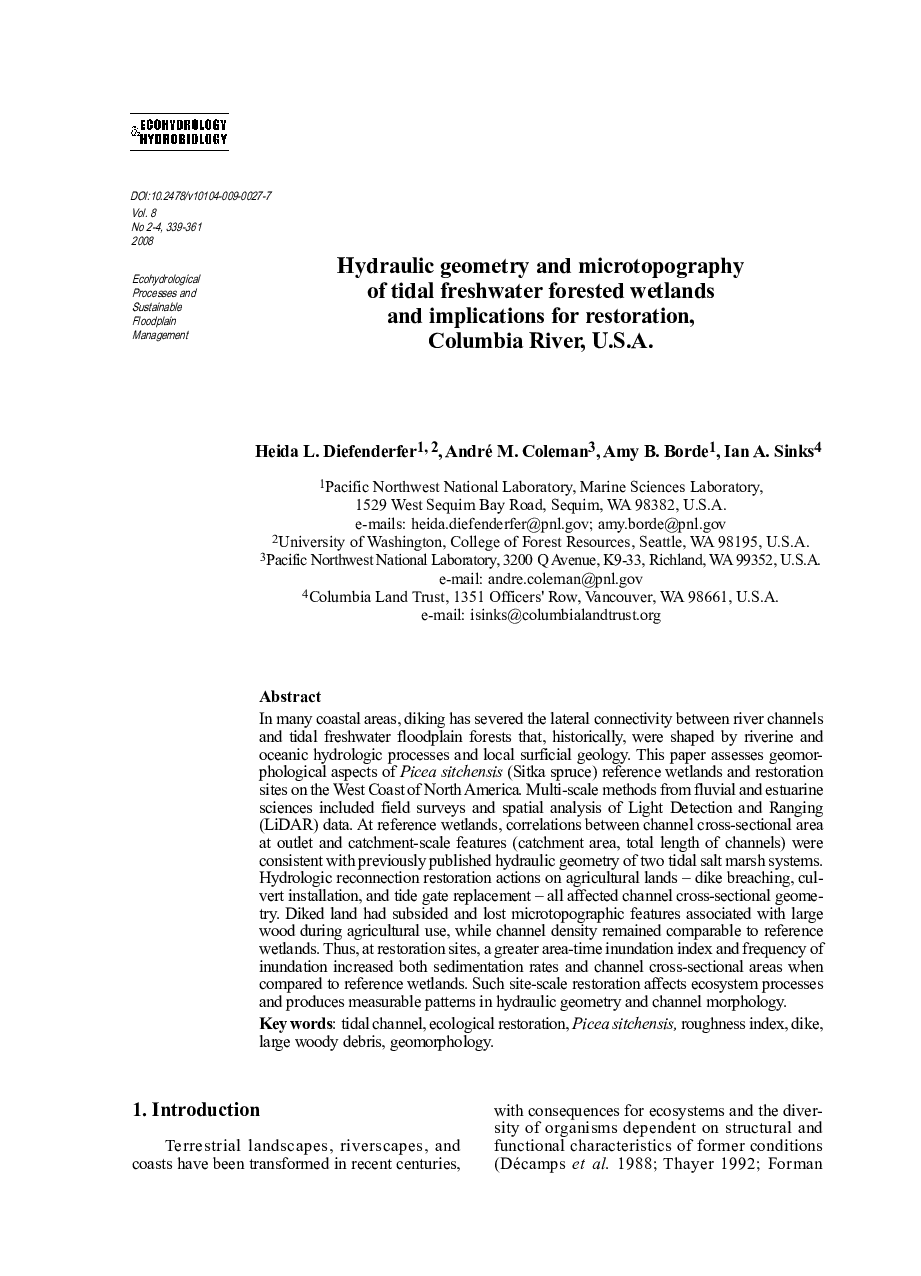| Article ID | Journal | Published Year | Pages | File Type |
|---|---|---|---|---|
| 4388250 | Ecohydrology & Hydrobiology | 2008 | 23 Pages |
In many coastal areas, diking has severed the lateral connectivity between river channels and tidal freshwater floodplain forests that, historically, were shaped by riverine and oceanic hydrologic processes and local surficial geology. This paper assesses geomorphological aspects of Picea sitchensis (Sitka spruce) reference wetlands and restoration sites on the West Coast of North America. Multi-scale methods from fluvial and estuarine sciences included field surveys and spatial analysis of Light Detection and Ranging (LiDAR) data. At reference wetlands, correlations between channel cross-sectional area at outlet and catchment-scale features (catchment area, total length of channels) were consistent with previously published hydraulic geometry of two tidal salt marsh systems. Hydrologic reconnection restoration actions on agricultural lands – dike breaching, culvert installation, and tide gate replacement – all affected channel cross-sectional geometry. Diked land had subsided and lost microtopographic features associated with large wood during agricultural use, while channel density remained comparable to reference wetlands. Thus, at restoration sites, a greater area-time inundation index and frequency of inundation increased both sedimentation rates and channel cross-sectional areas when compared to reference wetlands. Such site-scale restoration affects ecosystem processes and produces measurable patterns in hydraulic geometry and channel morphology.
